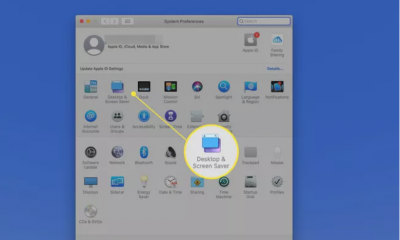Entertainment
The Design Philosophy Gap in Modern Interactive Entertainment
Owing to a reliance on evolving hardware, there’s no settled line on how interactive entertainment experiences should look, or how they should run. In some ways, this is a good thing, where experimentation and different design goals mean there’s something out there for everyone. There is a downside, however, in that in reaching for fidelity, some games hold back the gameplay experience. Where some games push for a clean and smooth look and style, others clutter and stutter due to overreach. This curious and often frustrating development has been the status quo for decades now, and we want to explore why, and the common forms they take.
The Positive Examples
When looking at the biggest market promoting effective and clean styles, the best illustrations are often found in online casino titles. Here, games like the Eye of Horus slots have been developed specially to cater to both high performance and striking visuals. Relying on an Egyptian theme for graphics while being backed by efficient HTML coding, games like this run flawlessly on devices even a few generations old. In this way, they lean on both looks and gameplay, where neither avenue suffers for the other.
In video games, the most pronounced demonstrations of this idea in action come from Nintendo. With series like Super Mario Bros, graphics from Nintendo are always charming and well designed, but never at the expense of performance. This is accomplished by leaning on style foremost, as online casinos do. This avoids clutter, and the games like Super Mario Odyssey excel for it.
Negative Experiences
On the other end of the spectrum, we have games like Cyberpunk 2077 for the PS4 and Xbox One. An incredibly complex game with many interactive systems, Cyberpunk runs notoriously poorly on the last-gen systems, even going so far as to be removed from the online stores after negative feedback. An example of developers placing too much of an emphasis on unreachable fidelity, Cyberpunk is a perfect microcosm of when style versus performance takes the wrong approach.
A Question of Why
Style versus performance has been fought on the gaming battleground for decades, and with understandable reasons. Traditionally when people bought video games, they didn’t have much to go on outside of magazine reviews and images on the back of game boxes. Since static art could only relay the fidelity of individual frames over continued performance, developers and publishers took an approach that favored screenshots more than gameplay.
Stepping outside of this move required developers and publishers to stick to real gameplay visions, rather than what they thought would sell the best. It was a tough ask, and as game development continually grew more expensive on the AAA scale, fewer and fewer parties were willing to cater to the gameplay side of the experience. Those who understood that video games were about, well, gameplay, had to fight for their approach. As it just so happens, those who did, such as Nintendo, tended to create titles that far better stood the test of time.
With the new range of consoles approaching a year old, gamers have found themselves in an interesting situation. For the first time, consoles are powerful enough that a 60 FPS standard is an achievable goal, which is a great thing for players. The only question is whether the growing 4K market will eventually cause developers to slip back into their old ways, to again tend visual fidelity over the gameplay experience. For now, at least, we can jump into cutting-edge titles like the new Ratchet and Clank without any downsides, in what we can only hope will be the way things stay.



















